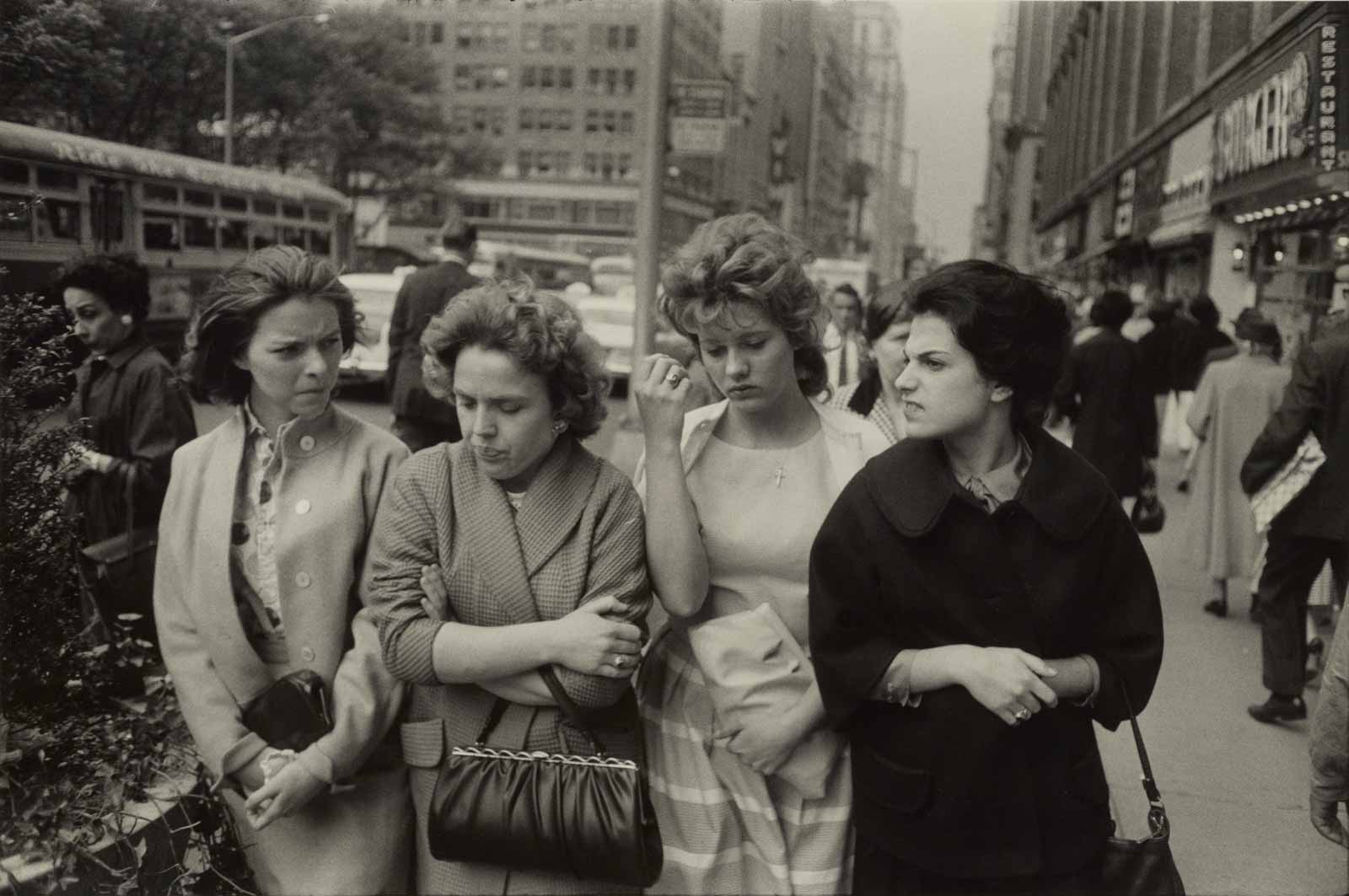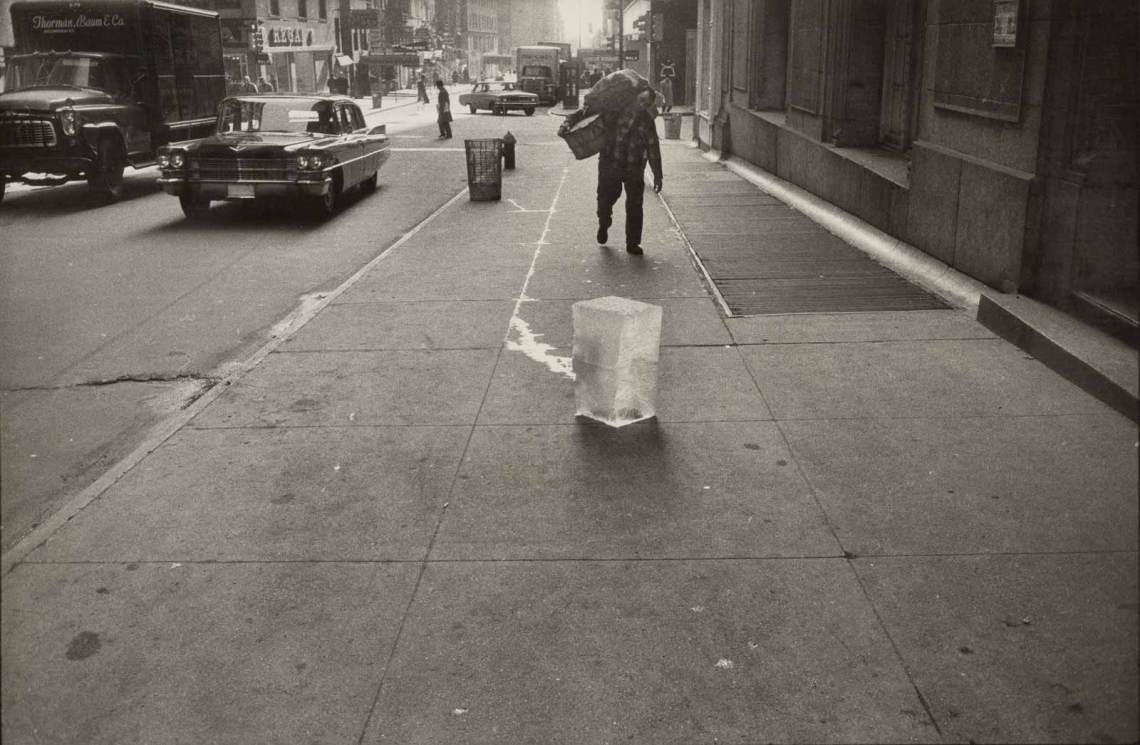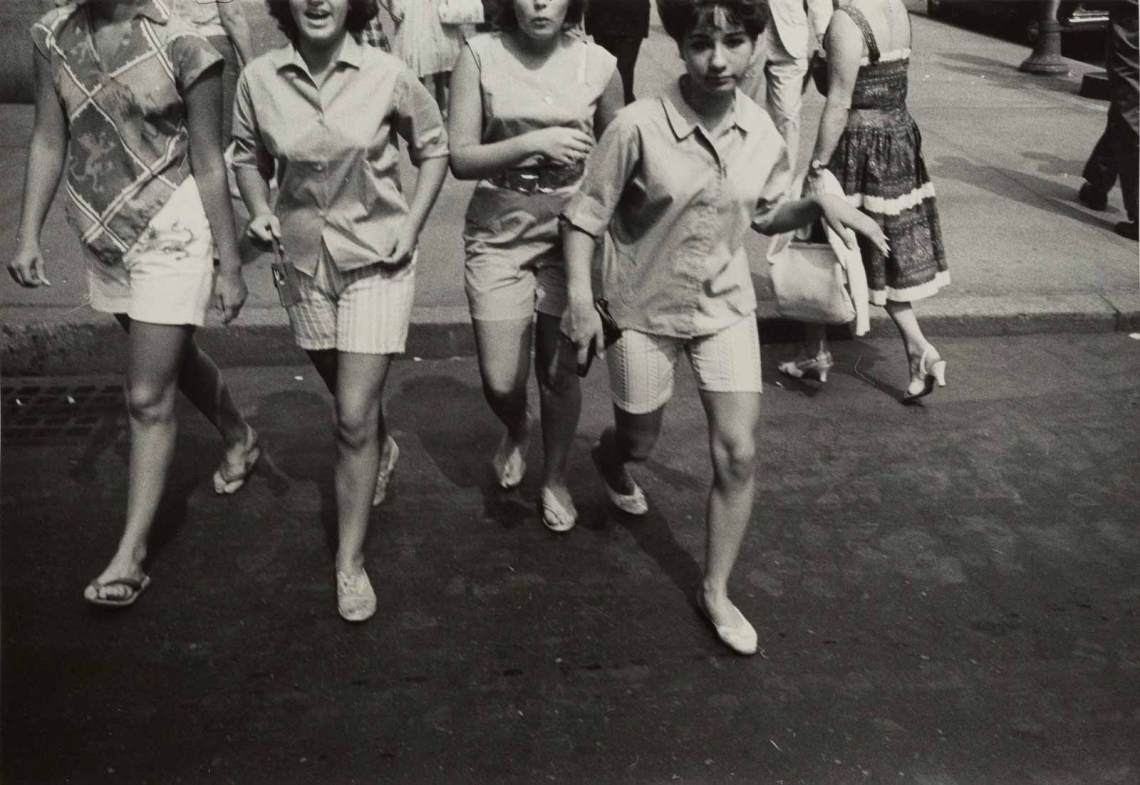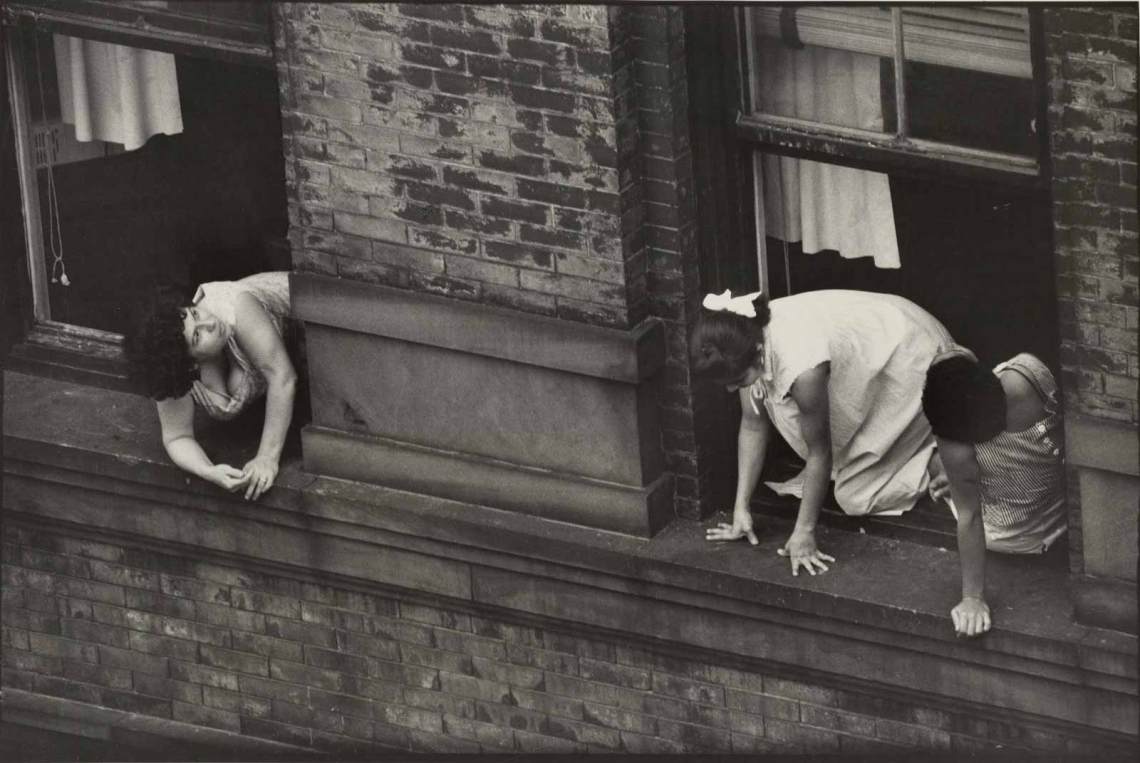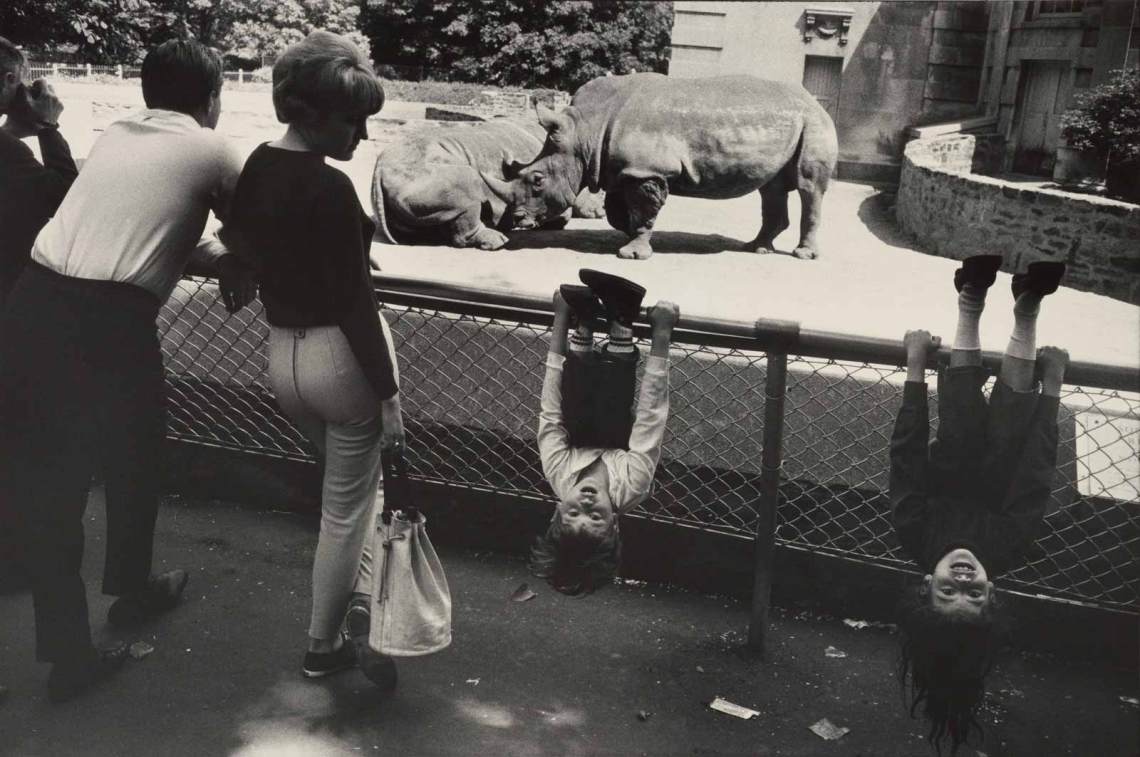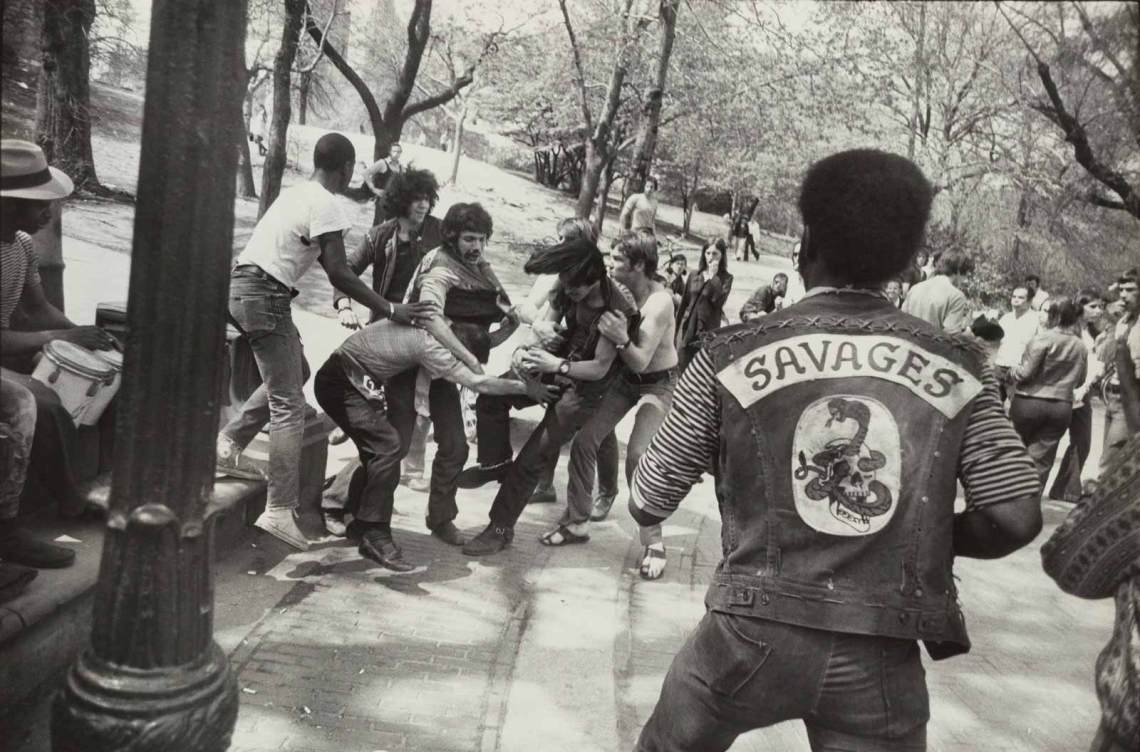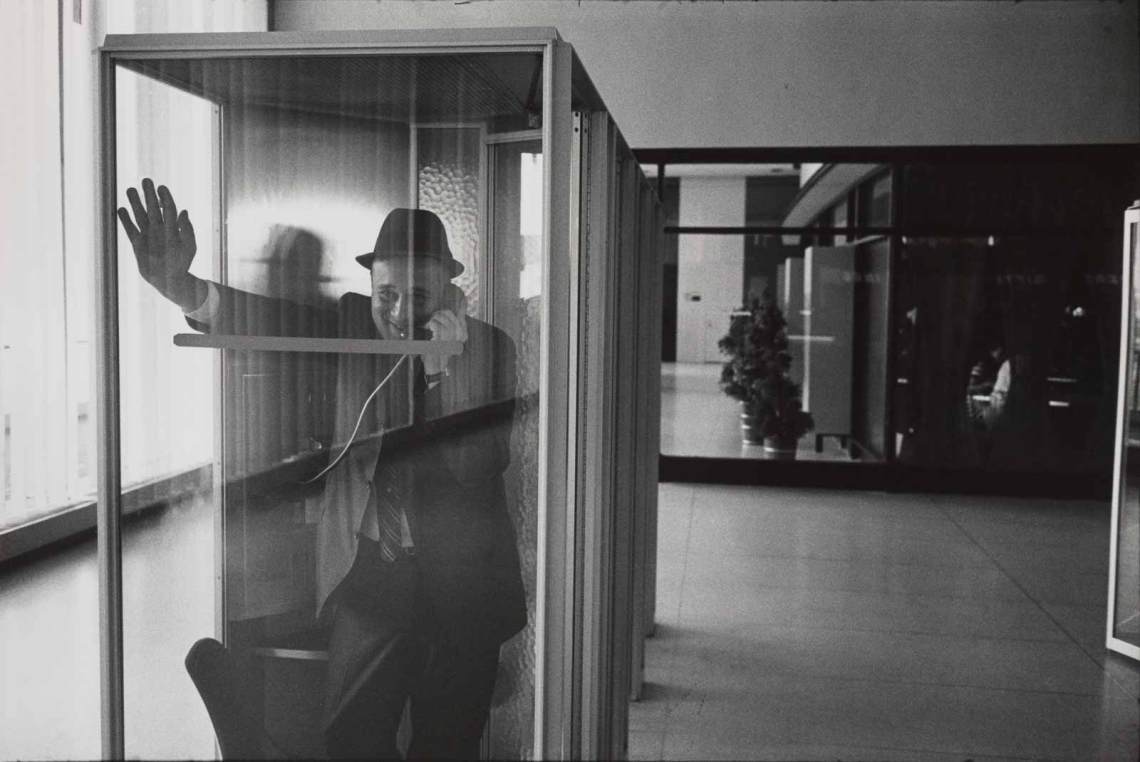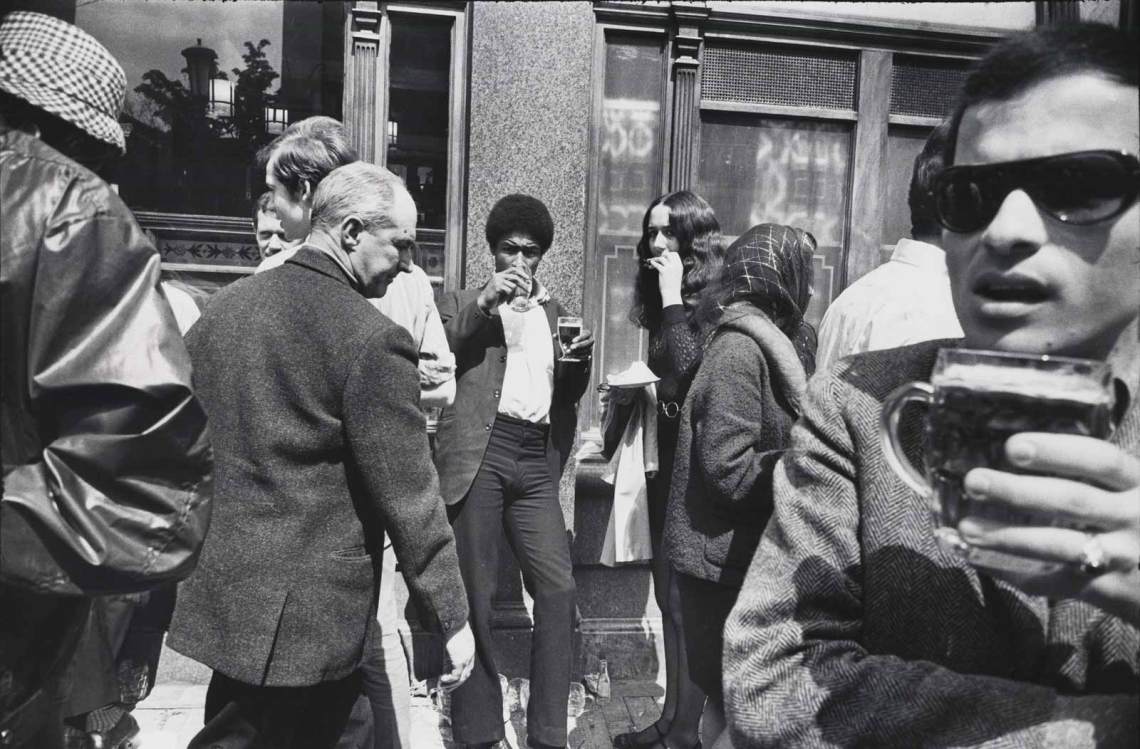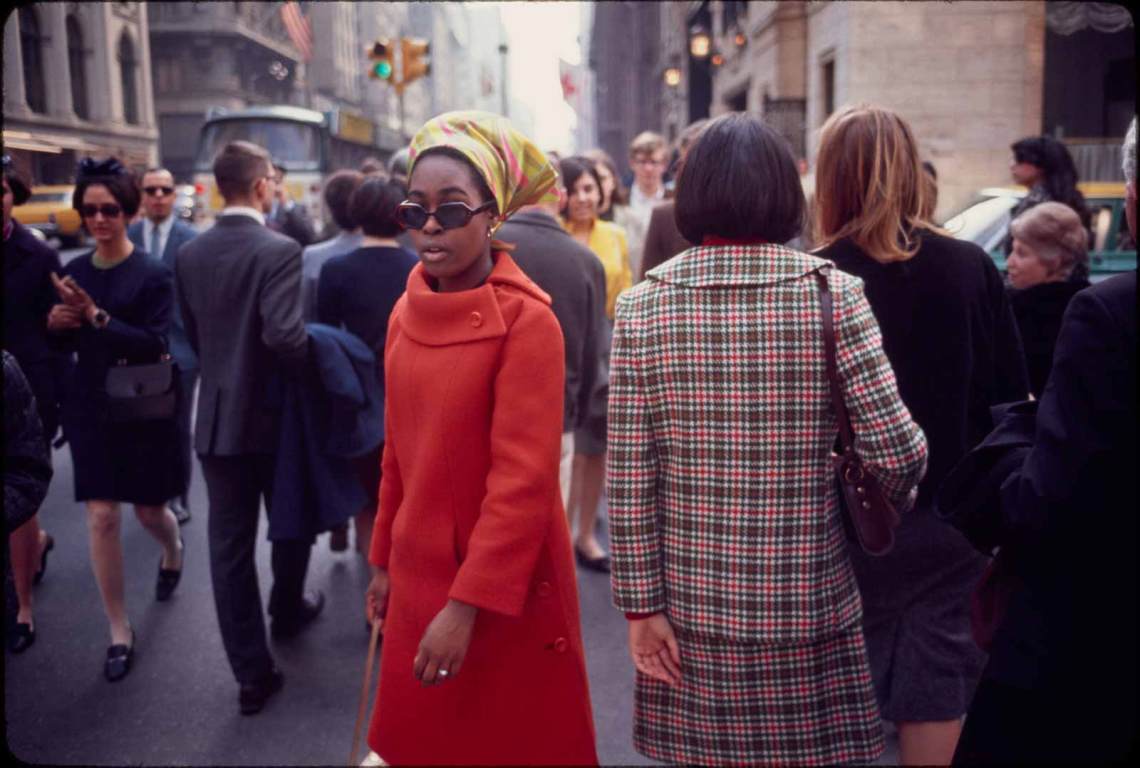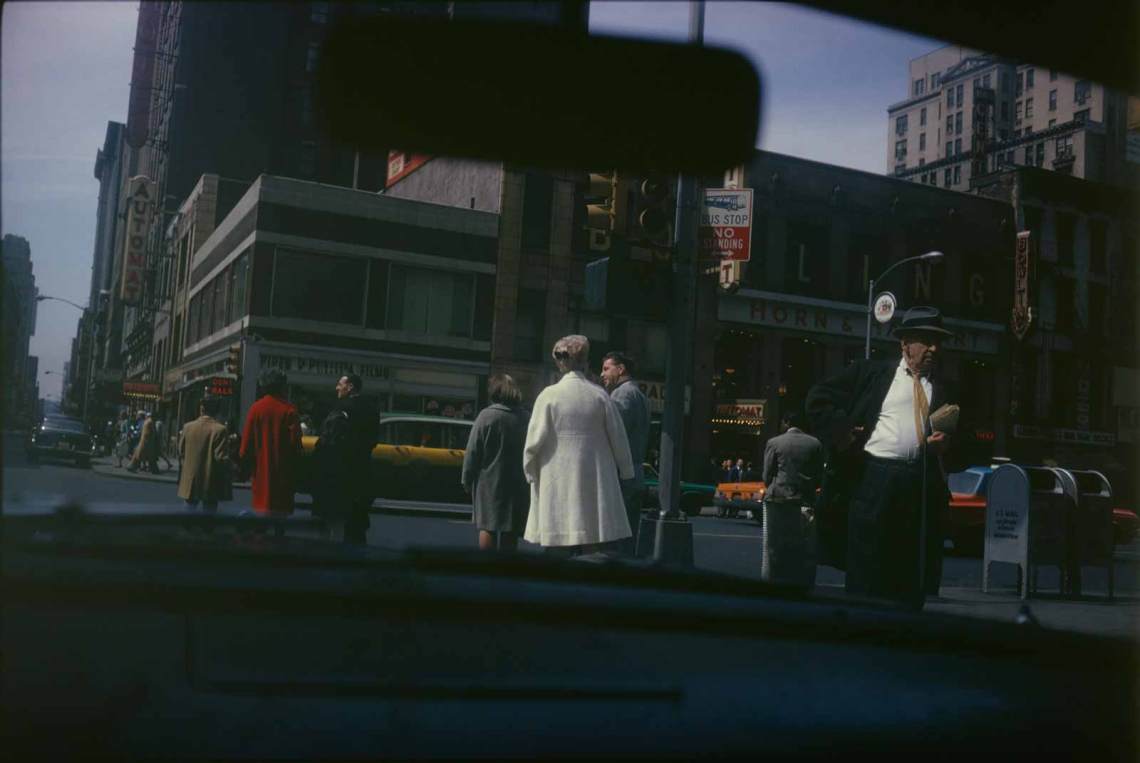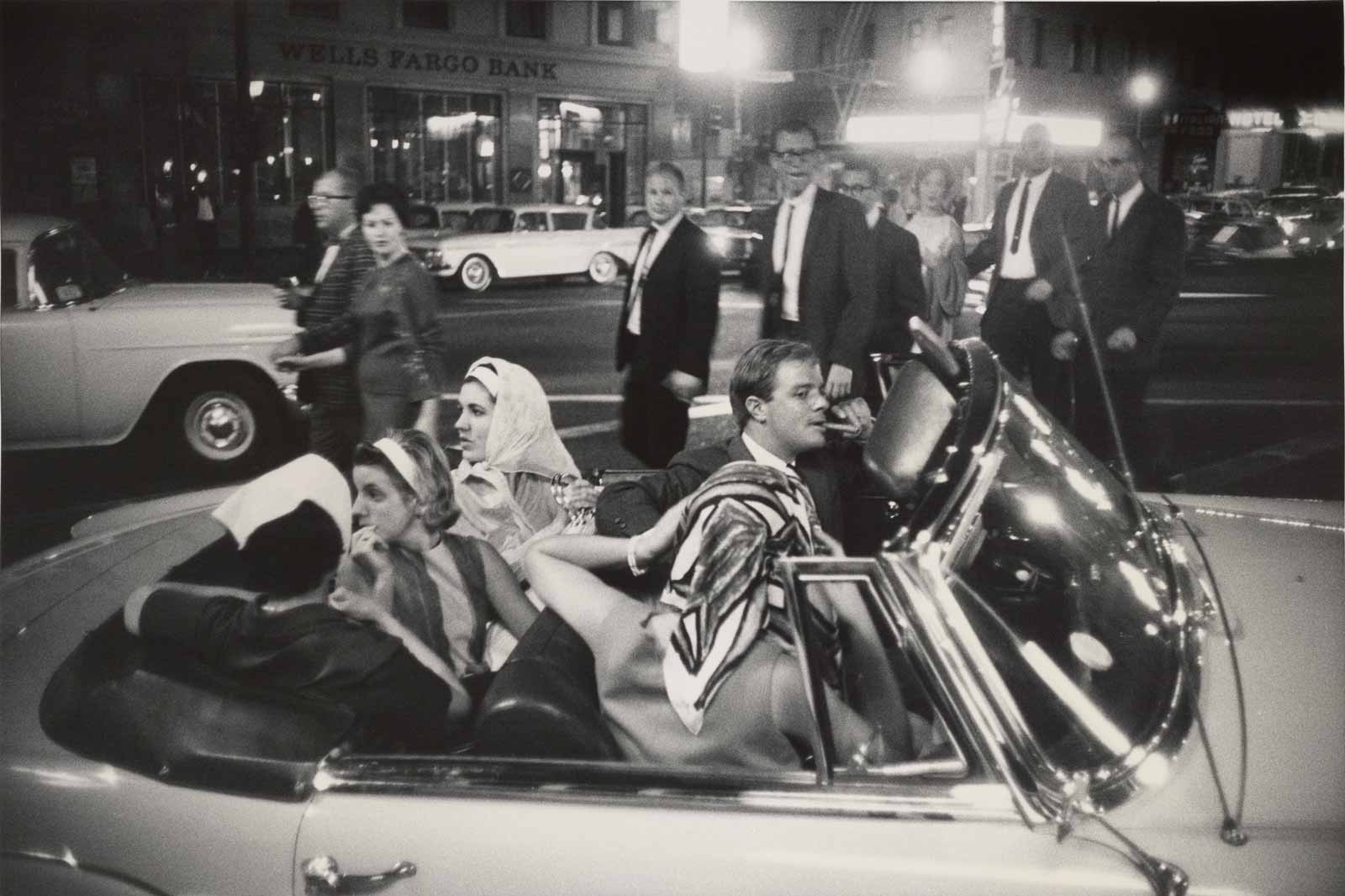In Geoff Dyer’s first book about photography, The Ongoing Moment (2005), the English critic and novelist looked at images by a group of his favorite photographers through a prism of motifs that he believed had reoccurred like Jungian archetypes across decades and continents. How and why these mundane subjects or objects (blind people, hats, roads, clouds, benches, doors, gas stations, barber shops) had been successively reinterpreted by Paul Strand, Walker Evans, André Kertész, Eugène Atget, Dorothea Lange, Robert Frank, Diane Arbus, William Eggleston, and thirty-four others formed the basis for a series of uncommonly original and engaging, if at times wayward, observations and reflections. Emulating Roland Barthes, Dyer oscillated between close readings of individual pictures and free associations. A photograph by Kertész from 1914, of an old man walking at night in Hungary, say, reminds him of a Cavafy poem because he reads both as nostalgic documents.
Dyer’s new book, The Street Philosophy of Garry Winogrand, is more linear but no less idiosyncratic. Selecting one hundred images from among the estimated one million that the fantastically prolific street photographer made during his life (1928–1984), Dyer analyzes each one in jaunty riffs that are longer than extended captions but shorter than fully-formed essays. This format, pioneered by the curator John Szarkowski in his books Looking at Photographs (1973; revised 1999) and Atget (2000), requires condensed thought. Dyer is limited to only about 750 words per photograph, with no spillover to the next two-page spread. At the same time, the serial presentation encourages informality. Expansive arguments are hard to sustain when you’re aware of a quickly upcoming, obligatory cut.
The structure suits Dyer’s talents perfectly. Arranging Winogrand’s life and career in a rough chronology, Dyer has portioned his selection so that about one sixth is devoted to the 1950s, when this Bronx-born son of Jewish working-class parents was exploring New York City with his camera, both on assignments from magazines and following his own instincts. Fully two thirds date from the 1960s, when Winogrand was in peak form, hungry each day to match his wits with an unpredictable world as he hit the sidewalk, cramming the era’s pandemonium into his 35mm wide-angle frames with an unrivaled voracity. The 1970s are the least represented here (Winogrand left NYC for good in 1973 and, many believe, was never as great again), while a final one sixth of the book tracks his sad, aimless last years in Los Angeles during the 1980s.
Along with detailed analyses of each image, Dyer also, more ambitiously, tries to answer a question that Winogrand asked himself: “How do you make a photograph that’s more interesting than what happened?” Winogrand was adamant that the image always depicted something different from that which was framed. “The photograph isn’t what was photographed. It’s something else. It’s a new fact.”
Dyer treats Winogrand’s images as historical evidence of time and place—of changes in fashion, urban planning, mass communications, civil rights for African Americans, sexual freedom for women and men, class and gender conflict—but also as a kind of fiction. Whatever information a photograph contains, this book suggests, is often dwarfed by what we can never know—and thus are at liberty to make up and turn into stories.
The raucous sprawl of Winogrand’s vast output has seemed to defy containment. Szarkowski organized the 1988 retrospective at MoMA according to where the pictures had been taken, with categories such as “The Zoo,” “On the Road,” and “Airport.” Leo Rubinfien, who curated the larger 2013 retrospective at SFMoMA, arranged the work by periods of Winogrand’s career: “Down from the Bronx,” “A Student of America,” and “Boom or Bust.”
Not beholden to the norms and restrictions of museum curation, Dyer has built his book’s selection more eccentrically on motifs, such as the quartets of women (and men) that reappear in pictures taken on the street decades apart. They aren’t, of course, the same people. Dyer thinks of them, nonetheless, as related, as characters in a feature film who, as they age, “are played by different actors.”
The obliviousness of people talking to unknown others in transparent phone booths—“almost as important to Winogrand as they were to Clark Kent”—is another theme Dyer identifies, along with attention to hairstyles and shoes. “Winogrand, a big and hulking photographer distinguished by his nimble footwork, was a wonderful photographer of feet.” Dyer usually details what’s happening in an image—not so easy in many of the crowd scenes—before revving up his imagination. About a 1970 photograph of a confusing mêlée in Central Park, he writes that “once a fight is in progress it’s often difficult to distinguish between peacemakers trying to stop the fight and those enthusiastically participating in it.” He notes that the fighters here are “without any clearly demarcated racial allegiances,” and that one of them wears sandals, “a radical practical and psychological disadvantage.” Finally, he envisions the congas player on the left edge of the frame as “beating out an improvised sound track!”
Advertisement
Dyer knows that many viewers have been perplexed (or irritated) by Winogrand’s choice of subjects, wondering why anyone would take a picture of, say, four flight attendants and two pilots sitting on a bench outside an airport terminal. Their undisguised boredom and frustration is the point, Dyer argues. “This is an image of pure, undisturbed waiting,” he writes. “The absence of anything besides waiting is absolute. Floor, wall, bench—that’s it.”
The book is decidedly a personal compilation and not a “greatest hits.” It omits many of Winogrand’s most celebrated images in favor of less familiar ones. Szarkowski and Rubinfien exhibited only one photograph taken outside the US, and neither bothered with Winogrand’s color work. This edit by the British-born Dyer, on the other hand, is skewed toward the autobiographic and includes nine photographs taken on brief visits to Europe in 1967 and 1969. And almost a fifth of the one hundred plates are in color.
I don’t share Dyer’s high regard for this largely unknown body of work. Despite the photographer’s flirtation with color—he left behind more than 40,000 transparencies and briefly exhibited a carousel of them in 1967 at MoMA before the projector malfunctioned and burned some of them up—he could never commit to the medium. One of the best of these images adorns the cover: it portrays an African-American woman in sunglasses, a yellow headscarf, and a stylish orange coat, strolling down a Midtown Manhattan avenue. “It was only recently that a black woman was able to walk with such confidence, affluence, and pride,” writes Dyer. “It gives the lie to adverts which make you believe that if you buy this coat people will fall in love with you. No, she renders it unsellable. It’s her coat, only hers. And the picture is all about her, all about colour.”
This summary is precisely why many of the color photos by Winogrand that Dyer chose are flat and disappointing, however. It’s obvious why he took them: They’re more about patterns and swatches and wild bits of pigment decorating the world (“all about colour”) rather than the anarchy within the world itself. Whereas his black-and-white photographs often defied accepted notions of composition, his color palette is soft and likable. His eye devoured the red-and-yellow sludge of a cheese-topped pizza; the saturated dyes in coats, shirts, dresses, and hats worn by pedestrians; the buffed shine of cars and gasoline pumps. But he was usually oblivious to the greens of flowers and trees or the blues of skies. His younger Southern friends, William Eggleston and William Christenberry, played the two sources of color—natural and manmade—off each other. When Winogrand published his photographs of Central Park, he invariably chose to do so in black-and-white.
To the extent that Winogrand’s images constitute a philosophy of life, as Dyer proposes, it could be that they remind us there’s no such thing as a passive observer—usually, one or more of Winogrand’s subjects would notice his intrusive presence, their stares or smiles adding vectors of questioning energy to his frames—or an isolated one. Rarely did Winogrand picture a lone person. Domestic drama, whether kitchen-sink or bedroom, held little appeal for him. Self-portraiture even less. The information in his photographs wasn’t privileged; it was publicly available to everyone who cared to notice. “Winogrand urges us to think about the ratio of onlookers to participants while simultaneously collapsing the distinction,” writes Dyer. “Looking becomes a way of participating in the photograph.”
Dyer’s dandyish insouciance may not be to everyone’s taste. He tiptoes around the issue of Winogrand’s obsession with women, especially braless ones. Relentless curiosity about the world—the desire “to photograph it all, every day,” as Lee Friedlander once put it—can be hard to distinguish from aggressive, leering nosiness. Scholars may wish he had written a few words about Winogrand’s technical know-how, notably his warping of traditional perspective lines with a 28mm lens. But the ratio of grounded, disarming insights to poetic fancy is high enough that his hundred micro-essays can sit honorably on the shelf with longer ones by Szarkowski, Rubinfien, Tod Papageorge, Ben Lifson, and Trudy Wilner Stack. Indeed, when I next want to recall instantly why Winogrand is essential, an exemplar of what photography can disclose about reality and our secret, public selves, Dyer’s will be the first book I reach for.
Advertisement
The Street Philosophy of Garry Winogrand by Geoff Dyer is published by University of Texas Press.


